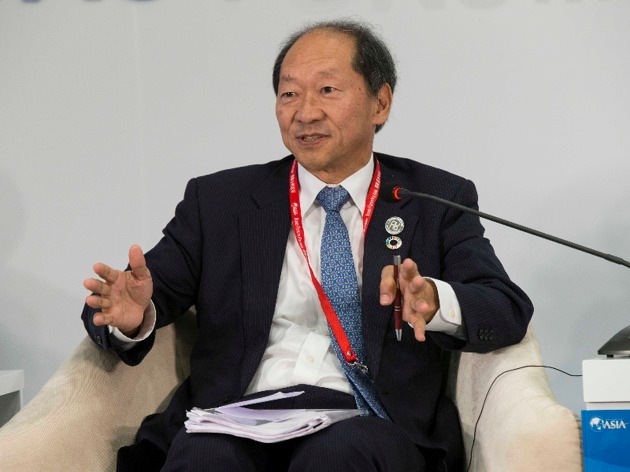
Shigeo Katsu (Photo/NBD)
Apr. 11 (NBD) -- The Belt and Road Initiative (BRI) upholds equal and cooperative relationship among countries and constitutes a new form of international collaboration as well as a new platform of global economic development, said Shigeo Katsu, former vice-president of the World Bank and president of Nazarbayev University of Kazakhstan, in an exclusive interview with NBD on the sideline of the Boao Forum for Asia on Tuesday.
It's been five years since China's BRI was launched. In the process of advancing BRI, China also combines the initiative with the 2030 Agenda for Sustainable Development Goals (SDGs) proposed by the United Nations (UN).
The SDGs, also known as the Global Goals, are a universal call to action to end poverty, protect the planet and ensure that all people enjoy peace and prosperity. The SDGs came into effect in January 2016, and they will continue to guide United Nations Development Programme policy and funding until 2030.
BRI, new platform for global economic growth
NBD: With regard to the UN 2030 SDGs, what challenges do you think are facing developing countries including those in central Asia?
Katsu: In achieving the UN 2013 SDGs, developing countries in central Asia still have to tackle many challenges including transformation from planned economy to market economy and kick-off of urbanization.
Besides, being agricultural economies, those developing countries offer simplistic products. The heavy dependence on agriculture is also a challenge which needs to be dealt with. But in the long run, the 2030 SDGs provide the largest developing opportunity for those countries.
NBD: Since the BRI was brought up five years ago, diversified forms of cooperation have been forged. How does your understanding of the BRI change? And how does BRI connect with the 2030 SDGs?
Katsu: Now, the BRI is a new form of economic cooperation and a new platform of global economic development which highlights mutual benefits. Participants of the BRI are cooperative partners on an equal basis.
Both the BRI and the 2030 SDGs underline environmental protection and sustainable development. If the BRI is proceeded in the right manner, it will greatly promote the accomplishment of the 2030 SDGs.
Supervision on market competition, important to control financial risks
NBD: What do you make of the cooperation between China and Kazakhstan under the framework of the BRI?
Katsu: Countries participating the BRI should formulate their own sustainable development plans which coordinate with the overall goals of the BRI.
In this regard, I think Kazakhstan sets a good example. Kazakhstan has polices which accords with the BRI. For instance, the country is promoting the infrastructure construction in transportation, industry, energy and other sectors.
In addition, lots of joint ventures have been created by deepening the partnership between China and Kazakhstan.
NBD: You've had rich work experience at the World Bank. What are your expectations of China's economic growth and what are your suggestions on preventing financial risks?
Katsu: As China is at the reforming stage where the economic growth is driven by consumption rather than investment, it's beneficial for China to stick to the opening-up policy as well as principle of market economy, and to continue to push forward reform. This is exactly what Chinese government is doing.
Speaking of financial risks, the financial crisis in 2008 burst out in the United States yet influenced countries across the globe. Emerging economies should get prepared (to avoid any potential financial crisis).
As emerging countries have many innovations in financial technology, how to ensure effective cross-border supervision is critical.
To create a fair competition environment, market competition should be supervised. For instance, most of resources and capitals are sometimes gathered at the hands of a few giants or enterprises. Such excessive concentration of resources and capitals may result in great risks.
Email: gaohan@nbd.com.cn


 川公网安备 51019002001991号
川公网安备 51019002001991号





